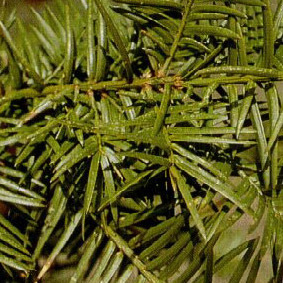Trees to 13(--18) m; trunk to 8 dm diam.; crown rather open-conical. Branches spreading to slightly drooping; 2-year-old branches yellowish green, yellowish brown, or gray. Leaves 1.5--3.8 cm, abaxial side with 2 scarcely impressed, grayish bands of stomates, rounded on adaxial side, emitting fetid odor when crushed. Pollen cones pale yellow. Seed (including aril) 2.5--3.5 cm; aril glaucous, dark green, streaked with purple.


